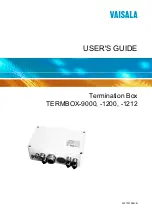
Appendix B Deployment Examples
Use with the CSS
B-22
Cisco 11000 Series Secure Content Accelerator Configuration Guide
78-13124-06
Table B-3
One-Armed Transparent Proxy Installation Device Configuration
CSS Configuration
Secure Content Accelerator Configuration
•
Create a VLAN for each Secure Content
Accelerator to be load balanced
•
Create a VLAN for the upstream router
•
Create a separate VLAN for the servers
•
Create a default route with the upstream
router as the gateway
•
Create a default route with each Secure
Content Accelerator as a gateway
•
Define a static route for each management
workstation not connected to a directly
attached subnet
•
Define a service for each Secure Content
Accelerator with its IP address, ensuring that
the type is “transparent” and that “no
cache-bypass” is configured
•
Create services as required for each server
(adding “keepalive” attributes as necessary)
•
Create Layer 4 content rules to balance the
Secure Content Accelerator devices; you may
use “advanced-balance ssl” and “application
ssl” to assist with SSL V.3 key reuse
•
Create Layer 5 rules for secure content
•
Create content rules as required for
non-secure content
•
Define ACLs and upstream router service to
ensure proper routing of traffic not terminated
on the CSS
•
Export keys and certificates from any existing
secure servers, if necessary
•
Assign an IP address to each Secure Content
Accelerator as specified in the CSS
configuration
•
Assign a default route for each Secure
Content Accelerator using the CSS VLAN
circuit IP address as the gateway
•
Set up one or more logical secure servers
using QuickStart wizard (Chapter 3) or
configuration manager (Chapter 4)
•
Set up single-port operation using the mode
one-port command (Appendix C)
















































